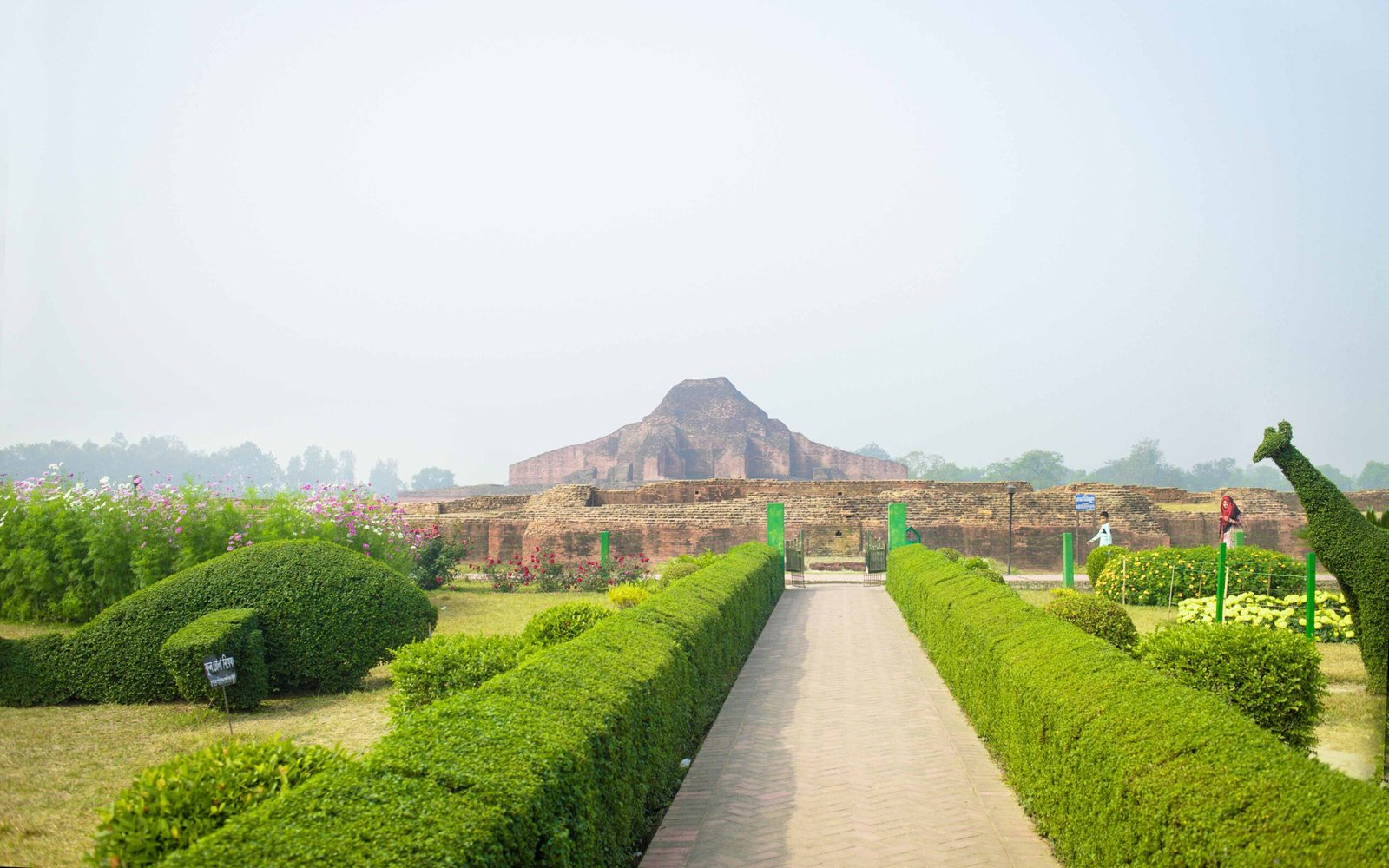Explore The History of Somapura Mahavihara in Paharpur Village
About
Somapura Mahavihara (Bangla: সোমপুর মহাবিহার) also known as Paharpur Bihar (Bangla: পাহাড়পুর বিহার) or Paharpur Vihara is located in Paharpur village, 34 km from Naogaon district town and about 16 km north of Badalgachhi upazila headquarters. It is near Jamalganj Railway Station, approximately 5 km to the west. Many refer to it as Paharpur (Bangla: Pahar-পাহাড় meaning hill and Pur-পুর meaning city, village or locality) because its central temple is shaped like a hill. This Vihara brings international recognition to both Naogaon district and Bangladesh. It is the largest Vihara in Asia.

Discovery and Excavation History
The earliest reference to the remains of the Somapura Mahavihara is in Scottish explorer Francis Buchanan Hamilton’s journal. He surveyed East India from 1807 to 1812 AD. During that visit he came to Paharpur and was particularly attracted by this huge ruin of the Vihara. He saw a steep hill covered with deep forest and topped with a huge banyan tree. He was assumed to be a Buddhist-Vihara. British army engineer Sir Alexander Cunningham came to Paharpur in 1879 AD and recorded the details. Later, he brought some laborers for extensive excavation at the site. That time, It was full of jungles and inhabited by venomous snakes and ferocious leopards. Mr. Cunningham cleared a portion of the forest and began digging. But the zamindar of Bolihar, the landlord of that area, opposed this work. As a result, Mr. Cunningham canceled the excavation.
After a long time, in 1923, the excavation work started again with the joint efforts of Calcutta University, Varendra Research Council and Archaeological Survey of India. This time, Sarat Kumar Roy of Dighapatia zamindar family helped financially in the excavation work.


About Pala Empire
The Pala Empire (Bangla: পাল সাম্রাজ্য) was a Buddhist dynasty that ruled over parts of eastern India and present-day Bangladesh from the 8th to the 12th centuries. The Pala dynasty was founded by Gopala, who came to power in 750 AD. The Empire was known for its support of Buddhism and for the construction of many Buddhist monasteries, temples.
During the Pala Empire, the capital of the dynasty was located in Pataliputra, which is now known as Patna, in the modern-day Indian state of Bihar. The Pala dynasty also controlled a large portion of modern-day Bangladesh, including the region around the Somapura Mahavihara. The dynasty was a period of prosperity and cultural achievements in eastern India and Bangladesh. The emperors of Pala dynasty were known for their support of the arts and education, and they also patronized many Buddhist scholars and philosophers.
Later, Pala dynasty declined in the 12th century, likely due to internal conflicts and the rise of Hindu kingdoms in the region. Despite its decline, the Pala dynasty had a lasting impact on the region, and many of the cultural and religious traditions that were established during this time continue to be practiced today.
Construction and features of Somapura Vihara
King Dharmapala II of the Pala dynasty built the Somapura Mahavihara in the 8th century (c 781-821 AD). He chose today’s Paharpur village for the purpose of establishing a large Buddhist temple in Varendra region. The existence of Somapura Mahavihara is clearly stated in the Tibetan history book “Pag-SAM-Jon-Zhang” and also in the history of the historian Lama Taranath. However, according to Tibetan sources, it was built by King Devapala after the conquest of Varendra around 810-850. A clay seal found during the excavation of the Vihara suggests that it is the Somapura Mahavihara.
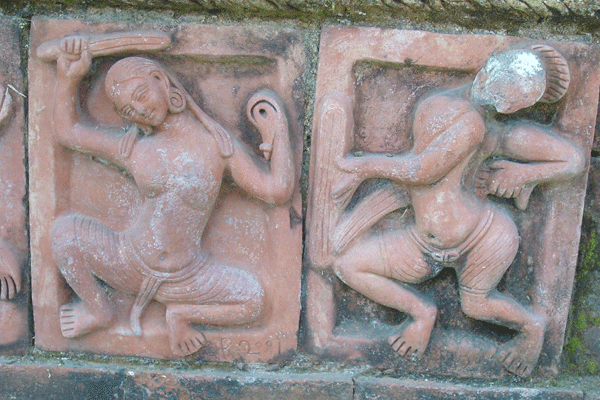
Somapura Vihara is situated on a total land of 81 bighas or 27 acres of land. The Somapura Buddhist Monastery is the largest in Asia. The area of Vihara is 281.20 meters or 922 feet from north to south and 280.29 meters or 919 feet from east to west. It can be found 177 habitable rooms for Buddhist monks. The Vihara has a wide entrance, small temples, numerous votive stupas and ponds. At its center is the architecturally distinctive towering central temple. Currently, the central temple measures 108.70 meters (356 feet 6 inches) in length from north to south while it’s 95.80 meters (314 feet 3 inches) in width from east to west. The temple’s height now stands at 21.35 meters (70 feet).
Ancient Coins and Architecture of Somapura Mahavihara
A silver coin of the reign of Caliph Harun-ur-Rashid was found in an earthen pot in Room No. 125 during the excavation of the Vihara. The coins were struck from the Mohammadia mint in 788 AD during the reign of Caliph Harun-ur-Rashid. According to Dr. Abdul Karim and Prof. Enamul Haque, perhaps some saint or missionary brought these coins here. The craftsmanship of the architects from that era is evident in the construction of this Vihara and all its buildings, showcasing their skill. Designed in the form of a fort, the central temple is pyramidal in shape, while the entire Vihara is encircled by boundaries. It had an entrance on the north side. The stairs to the main building were also on the north side.
Currently, 3 rows of terracotta plaques can be seen on the temple walls. Their number is about 2 thousand. Moreover, around 800 terracotta was found during the excavation. On the north side of the ruins lies a beautiful brick well, measuring 2.50 meters (or 8 feet 3 inches) in diameter. To the west of this well, and also serving as a key part of the Vihara, is a long hall that was the dining hall. Adjacent to the dining hall, on its west, was the kitchen. Near the kitchen, three paved wells were also discovered during the excavation.
Designated by UNESCO
UNESCO designated the Somapura Mahavihara as a World Heritage Site in 1985 due to its outstanding universal value as a cultural and historical site. For the first time, In 1985 UNESCO declared “Somapura Mahavihara” along with “Historic Mosque City of Bagerhat” as World Heritage Sites. Later, in 1997, UNESCO recognized another one from Bangladesh, ‘The Sundarbans‘. The Buddhist Monastery is considered to be an important example of Buddhist architecture in South Asia and is an excellent representation of the cultural and religious traditions of the region. The designation not only recognizes the importance of the monastery as a site of exceptional value but also helps to ensure its protection and preservation for future generations.

Education Center
Somapura Mahavihara was first established as a residence for Buddhist monks, but later the Vihara became an important center of learning. That time it was also a higher educational institution for the practice of knowledge, science, theology, which attained the status of a university. Students from various countries around the world used to gather at this site to gain knowledge. Maha Panditacharya Bodhi Bhadra resided in Somapura Mahavihara, and notably, Acharya Atish Dipankar also spent time living in this Vihara. Furthermore, his mentor Ratnakar Shanti served as the Mahasthabir of Sompur Vihar. Additionally, the ancient charagitika Kahnpa and his mentor Jalandhari Pa, also known as Hari Pa, were residents of this Vihara.
Museum in Somapura Mahavihara
Various artifacts have been found at different times, both as a result of excavations. They are preserved in a museum located near the Vihara, which was built in 1950. Some of the artifacts of this Vihara are also kept in the Varendra Research Museum in Rajshahi. Among the artworks those are preserved in the museum are as follows:
- Chamunda idol in sandstone
- Standing red stone idol of Shitala
- Fragment of Vishnu in Krishna stone
- Ganesha Standing in black stone
- Sandstone statue of Kirti
- Oil painting of Maharani of Dubalhati
- Damaged statue of Hargouri
- Broken statue of Lakshmi Narayana in Krishna stone
- Black stone Uma idol
- Sandstone Gauri statue
- Sandstone Vishnu idol
- Nandi statue
- Vishnu idol in black stone
- Sun statue
- Shiva Linga made of black stone
- Sandstone statue of Mansa

Visited by Famous People
Somapura Vihara has been visited by many notable figures and tourists from around the world. These include leaders from the International Buddhist Association, Kurt Waldheim – the Secretary General of the United Nations, the Queen of Spain, the Prince of Thailand, Sri Lankan President Premadasa, and ambassadors from countries like Australia, France, Nepal, Bhutan, among others. Paharpur Vihara is the largest single Buddhist monastery discovered so far in the world. No logical explanation could be found for why the vast Vihara was built in an uninhabited place.
Maintenance of The Historical Site
It is currently maintained by the Directorate of Archeology, Government of Bangladesh. There is a guest house here for the convenience of visitors. At its entrance, there is a well-decorated garden of various kinds of flowers. Additionally, several toilets have been constructed here recently. Besides, large parking spaces have been constructed on unused land, and some wooden stairs have also been constructed. Those wooden stairs helping the visitors to roam around the premises smoothly while those stairs also prevent the visitors from getting close to the priceless structures.
In addition to these, a group of Tourist Police has been deployed at the site for security and to provide assistance to visitors.


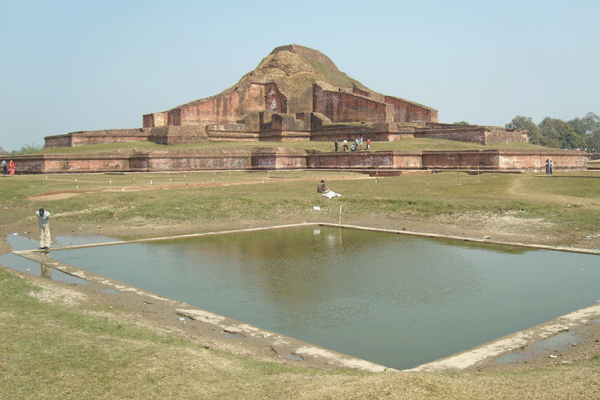

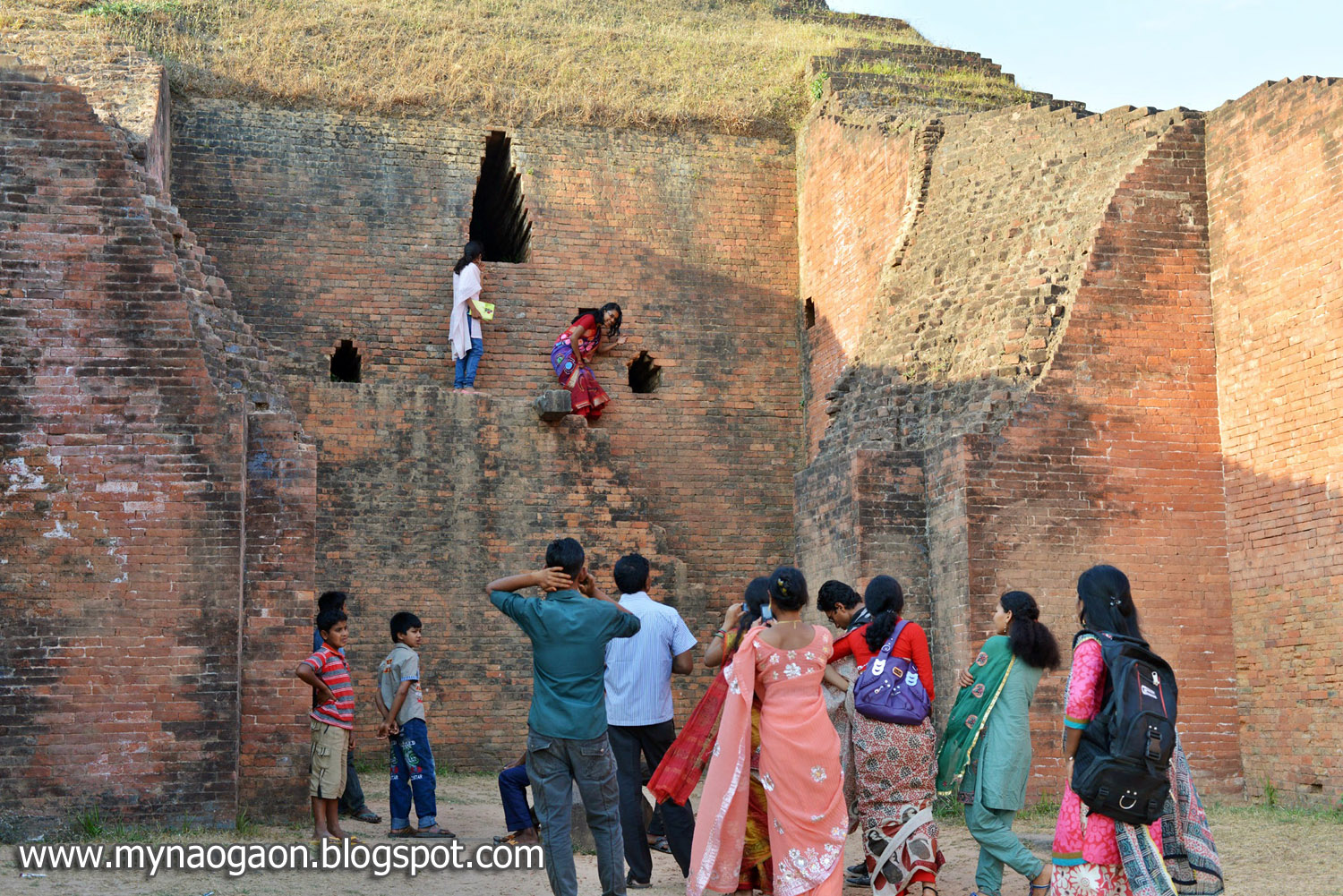
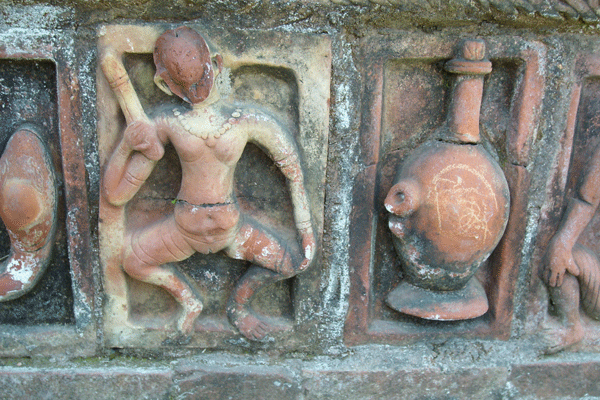
How to Visit Somapura Mahavihara?
You have to go to Naogaon town from anywhere in Bangladesh. From here the distance of Somapura Mahavihara is 34 km. It is located on the eastern side of the Naogaon-Joypurhat Regional Highway. Visitors also can travel to Somapura Vihara by train! The nearest station, Jamalganj, which is only 5 kilometers away. Additionally, Somapura Mahavihara is accessible from Joypurhat district headquarters. Its distance from Jaipurhat city is 13 km.
Where to Stay and Eat in Somapura Mahavihara?
There is a government rest house inside the site where visitors to Somapura Mahavihara can take accommodation by prior booking. Besides, there are many hotels in Naogaon district town. The most famous of these hotels is ‘Mallika Inn’. In addition to this, many hotels are avilable in the nearby towns of Badalgachi Upazila Sadar and Joypurhat.
At the entrance of the spot, there are some food shops (locally known as Hotel) where mainly Bengali foods, snacks, and soft drinks are available. However, recently, a restaurant called The Heritage Cafe has been established within the borders of the site, and food of comparable quality is available there. In addition to this, more quality restaurants can be found in the neighboring towns of Badalgachhi, Joypurhat, and Naogaon.
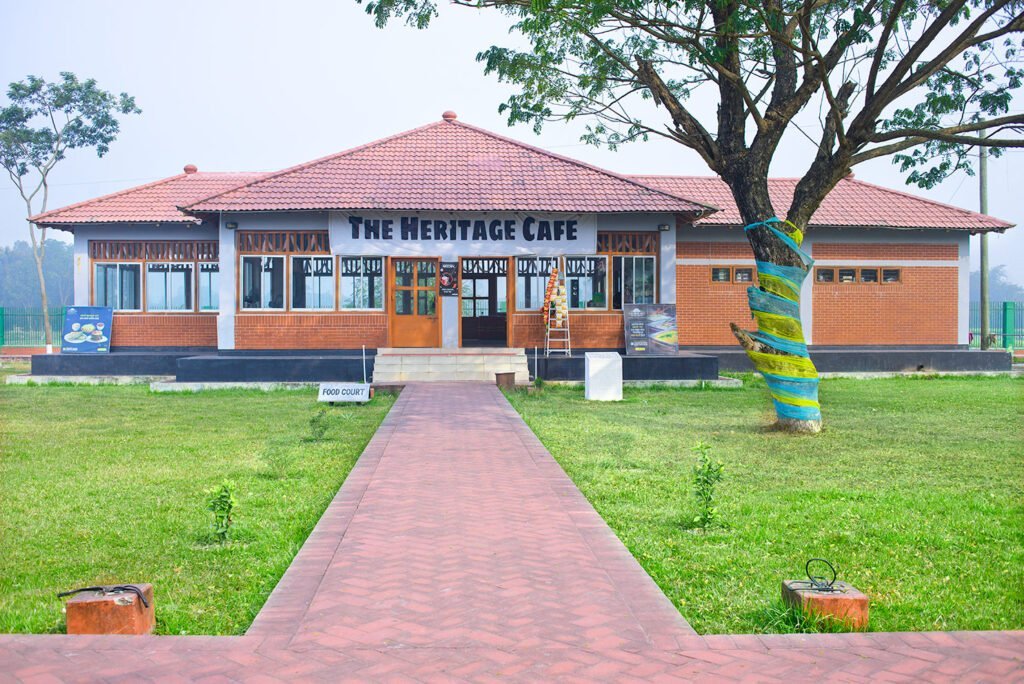
Opening Hours and Entrance Fees of Paharpur Vihara
- Tuesday to Saturday: 10:00 AM – 5:00 PM
- Monday: 2:00 PM – 5:00 PM
- Sunday: Closed
- Break time: 1:00 to 1:30 PM on weekdays, 1:00 to 2:00 PM on Fridays.
Entrance Fee
- Domestic visitors: 20 taka
- Students up to secondary level: 5 taka
- Foreign visitors: 200 taka
- SAARC country visitors: 100 taka
- Children under 5 years: Free
Photo: Rumon Anam

